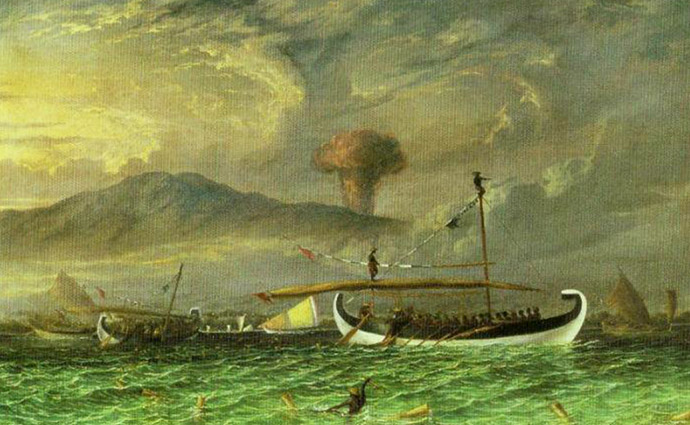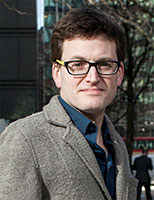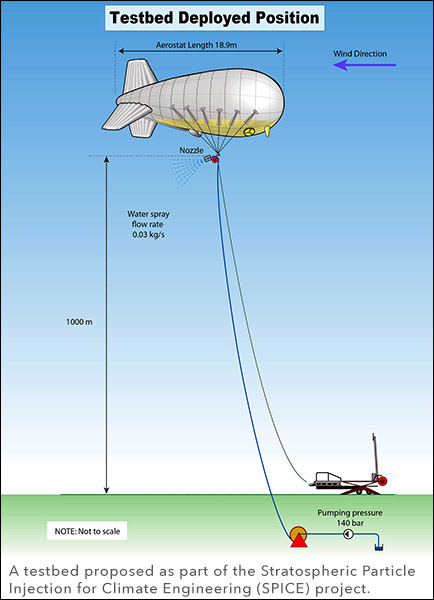Ogmius exchange
|
The Postmodern Prometheusby Dr. Jack Stilgoe |
April 2015 marked the bicentennial of the largest volcanic eruption in recorded history. The explosion of Mount Tambora in Indonesia could be heard a thousand miles away. Thousands living around the mountain died, but its effects spread far further and longer, and its cultural echoes continue to this day. The ash and sulfur from the volcano stretched miles up into the stratosphere, spreading around the globe. The volcano’s impact on the world’s weather meant that 1816 became known as the ‘year without a summer’. In a grand villa on the shores of Lake Geneva, four British friends escaping the cold and rain challenged each other to write ghost stories. Their host, George (known to most people as Lord Byron) was already an established poet. But it was Mary (then still a teenager) whose effort would change the way we think about technology forever. Her story was published two years later as Frankenstein, and given the subtitle ‘The Modern Prometheus’ after the Titan who stole fire from the gods. It was, in Shelley’s own words, a story ‘on which would Speak to the mysterious fears of our nature and awaken thrilling horror’. Lord Byron, Mary Shelley and friends had no idea that their holiday had been ruined by a volcano on the other side of the world. In the 200 years since, scientific understanding of the Earth system has explained how volcanoes can cool the planet and inspired some techno-enthusiasts to ask a Promethean question – what if we could mimic a volcano and counteract global warming? The possibility of geoengineering or, as a report earlier this year from the National Academies relabeled it, ‘climate intervention’, began as Cold War technological hubris. In the 1960s, when global warming was first brought to the attention of the American president by his own scientific advisory committee, the presumption was that technology would be our salvation, either by shading the surface of the planet or by removing greenhouse gases. The first option, removing greenhouse gases from the atmosphere, would mean brute-force reverse-engineering of the industrial revolution. The alternative, reflecting sunlight, was presented as comparatively easy. All it would take was a few million tonnes of sulfur dioxide in the stratosphere, as Tambora had done in 1815. The only challenge was getting it up there. Various options were suggested: airplanes, missiles and giant helium balloons with hoses. |
However, the more environmental scientists learned about the precarious balance of the Earth system, the further geoengineering fell out of fashion. Many scientists, especially those who sounding the alarm about climate change and attempting to persuade policymakers to change their ways, found the seductive offer of a technological fix nauseating. They worried that the mere suggestion of geoengineering would give governments an excuse for continued inaction – like offering liposuction to a morbidly obese patient. Scientists’ nervousness led to a form of taboo – a tacit agreement that geoengineering should not be discussed in polite company. It didn’t last long, however. Climate scientists were burdened with knowing the effects of our continued pollution. Humanity’s responsibility for the climate was becoming ever clearer, as was the extent of our neglect. Repeated failures of international climate talks contributed to a profound sense of despair among scientists and environmentalists. In 2006, Paul Crutzen, who had won a Nobel Prize for explaining the hole in the ozone layer, gave geoengineering a veneer of respectability, arguing that it could be a sword with which to cut the Gordian knot of climate change. Geoengineering is TED-talk innovation: a seductive, ‘why not?’ idea, inspired by nature, whose uncertainties are easy to overlook in an 18-minute slideshow. But, as with other technological fixes, it demands a form of magical thinking. There would be nothing cheap, quick and easy about geoengineering. The latest report from the Intergovernmental Panel on Climate Change makes clear that carbon dioxide remains in the atmosphere for generations. Even if we were able to shade the planet, the technology would only mask the problem it was meant to solve. Withdrawal would require unimaginable societal willpower. If our future geoengineering machines, whatever form they might take, were turned off, the continued build-up of greenhouse gases would mean that the climate would switch to a new state within months, making adaptation all but impossible.
Jack Stilgoe Geoengineering-relevant CSTPR Publications Dilling, L. and R. Hauser (2013). Governing geoengineering research: why, when and how? Clim. Change 121 (3) 553-565, December. Hale, B. and L. Dilling (2011). Geoengineering, Ocean Fertilization, and the Problem of Permissible Pollution. Science Technology & Human Values 36 (2) 190-212, March 11. Hale, B. (2013). Remediation vs. Steering: An Act-Description Approach to Approving and Funding Geoengineering Research. Designer Biology: The Ethics of Intensively Engineering Biological and Ecological Systems, Ed. J. Basl and R. Sandler, 197-217, Lexington Books, July. Hale, B. (2012). The World That Would Have Been: Moral Hazard Arguments Against Geoengineering. Engineering the Climate: The Ethics of Solar Radiation Management, Ed. C.J. Preston113-131, Lexington Books. Pielke, Jr., R. A. (2009). Air capture update. Nat. Geosci. 2 (12) 811-811, December. Pielke, Jr., R. A. (2009). An idealized assessment of the economics of air capture of carbon dioxide in mitigation policy. Environ. Sci. Policy 12 (3) 216-225, May. |



 Introduction
Introduction

 For the last three years, I have been working with scientists in one of the world’s first geoengineering research projects. I have been trying to help them make sense of the social and political issues that surround them. They were taken by surprise when an experiment they wanted to conduct – using a benign contraption made from a helium balloon, a hose and a water pump – attracted criticism from scientists and environmental interest groups. While the scientists saw their work as informing the debate on geoengineering, critics thought that they were stepping onto a slippery slope towards a geoengineered future. The scientists called off their experiment and, as I describe in my recent book, their experience has become a useful test case in responsible research and innovation. But others are following in their wake. The number of scientists interested in geoengineering is growing. Most still find the idea distasteful, but there is a palpable and growing sense of excitement about running experiments on computer models as well as on the environment itself. The message of Frankenstein is more relevant than ever. Experiments with potentially monstrous ramifications should be handled with care.
For the last three years, I have been working with scientists in one of the world’s first geoengineering research projects. I have been trying to help them make sense of the social and political issues that surround them. They were taken by surprise when an experiment they wanted to conduct – using a benign contraption made from a helium balloon, a hose and a water pump – attracted criticism from scientists and environmental interest groups. While the scientists saw their work as informing the debate on geoengineering, critics thought that they were stepping onto a slippery slope towards a geoengineered future. The scientists called off their experiment and, as I describe in my recent book, their experience has become a useful test case in responsible research and innovation. But others are following in their wake. The number of scientists interested in geoengineering is growing. Most still find the idea distasteful, but there is a palpable and growing sense of excitement about running experiments on computer models as well as on the environment itself. The message of Frankenstein is more relevant than ever. Experiments with potentially monstrous ramifications should be handled with care.